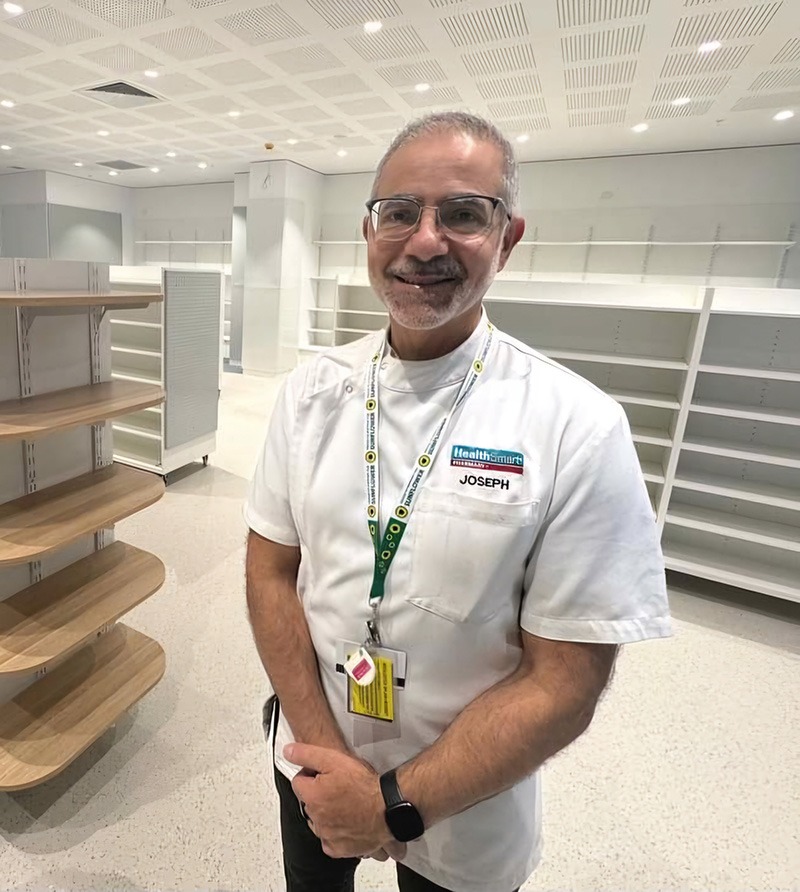The Therapeutic Goods Administration (TGA) has announced shortages on several brands of HIV pre-exposure prophylaxis (PrEP) medicines, sparking concern among healthcare professionals.
There are four products now listed on the TGA’s medicine shortages reports database, with stock of the various only likely to be replenished between October 2024 and March 2025.
This may affect access to the medicine for over 45,000 Australians, who filled at least one prescription of PrEP last year.
The antiretroviral is largely responsible for the 66% reduction in HIV infections in Victoria and NSW between 2010 and 2019.
‘For many decades, a lot of gay men associated sex with anxiety because of the risk of HIV,’ said The Kirby Institute’s Professor Andrew Grulich. ‘[PrEP is] the most highly effective form of HIV prevention we’ve got, and we need to make sure it’s going to be available.’
Alfred Joseph Tesoriero MPS, owner of Melbourne’s HealthSmart Pharmacy who sees 500 patients with prescriptions for PrEP per month, said the shortage has ‘become a significant problem.’

‘It’s been a long time coming,’ he said. ‘For virtually all of 2024 there has been predicted shortages from Viatris who have said that the main issue has come from there being a global shortage of the [drug].’
The vast majority of Mr Tesoriero’s patients take PrEP daily, and normally present with a prescription for 3 months’ supply, corresponding with quarterly blood tests to ensure there’s no circulating levels of viral activity.
While he’s been able to remain ahead of the curve for most of the year in terms of PrEP supply, the well ran dry by the end of July.
‘Viatris said there was no more supply, so we began rationing, whereby we would give the patient 1 month supply, keep their details here and send them a text message when stock was going to become available,’ he said.
What options do patients have?
With PrEP in short supply, PrEP on demand can be an interim measure (if this is appropriate), and should be discussed with the doctor.
‘This is probably the quickest way for current patients who [already] have some supplies,’ Mr Tesoriero said.
The dosing regimen for PrEP on demand includes taking:
- two tablets (a double dose) 2-24 hours before unprotected sex
- one tablet 24 hours after the first dose
- one tablet 48 hours after the first dose.
‘Four tablets over the course of 3 days provides protection against the transmission of HIV,’ he said.
‘But if someone has regular at-risk behaviour, it would mean they’d be taking it all the time, so they end up having the same [supply shortage] issue.’
Some people have had success purchasing PrEP overseas from online sources, but there are regulatory and logistical challenges with this approach.
To ensure patient confidentiality, Mr Tesoriero provides patients with a printed information sheet on PrEP and the current shortage when they present with a prescription for PrEP.
‘A lot of people are very familiar with the situation because it’s been in the chat groups for the past few weeks,’ he added.
What message should pharmacists relay to patients?
While PrEP’s availability is constrained at the moment, it’s important for people who need it to know there is still supply of the medication in Australia, said Dash Heath‑Paynter, CEO of Health Equity Matters.
‘Community members with a valid PrEP script may need to ring a number of pharmacies to identify a pharmacy that has stock of PrEP,’ he said.
It’s also important to understand there are several ways to take PrEP safely.
‘This includes using PrEP on demand and periodically. Both of these options involve reduced use of the medication. We encourage community members to discuss these options with their GP,’ he said.
Heath‑Paynter told Australian Pharmacist that Health Equity Matters is working across its membership, professional bodies, industry and the Department of Health and Aged Care to resolve the PrEP supply shortage.
‘The Department is aware of the shortage and is actively seeking to resolve the matter,’ he said. ’We expect a solution to be implemented by the end of the month.’
Are there any other supply options?
To circumvent supply shortages, there may be another interim supply route of PrEP available to patients via a Section 19A import of the medicine into Australia by Phero Pharm, explained Mr Tesoriero.
However, supply is only slated to arrive by the end of September 2024, with the cost under S19A also significantly higher.
‘Currently, the buy-in price [of PrEP], according to wholesalers, is around $17.80 per bottle,’ he said. ‘But Phero is saying that the landed price would be $88.50 which is quite prohibitive.’
The high Pharmaceutical Benefits Advisory Committee (PBAC) discount rate on PrEP means that it’s not economically viable for manufacturers to continue to distribute PrEP in Australia, thinks Mr Tesoriero.
‘Since PrEP has been on the PBS, the cost price of the drug has been cut dramatically from around $200 per month to $17,’ he said. ‘So if there’s a stock shortage, there’s no margin for a drug company to ramp up production on something they would lose money on.’
Unless PBAC lifts the ceiling price of PrEP, Mr Tesoriero believes the shortages will persist.
‘When some value is put back into the drug, as they did with a lot of other molecules [such as] antibiotics, it will make more sense from a manufacturer’s point of view to be able to go back into production.’



 National Medicines Symposium 2024 speakers (L to R): Steve Waller, Professor Jennifer Martin, Professor Libby Roughead, Tegan Taylor[/caption]
National Medicines Symposium 2024 speakers (L to R): Steve Waller, Professor Jennifer Martin, Professor Libby Roughead, Tegan Taylor[/caption]


 This CPD activity is sponsored by Reckitt. All content is the true, accurate and independent opinion of the speakers and the views expressed are entirely their own.[/caption]
This CPD activity is sponsored by Reckitt. All content is the true, accurate and independent opinion of the speakers and the views expressed are entirely their own.[/caption]







